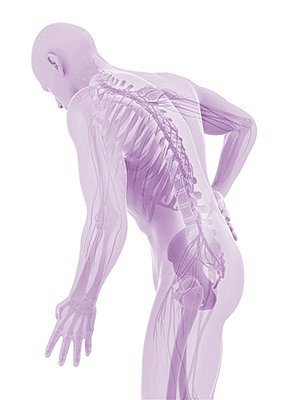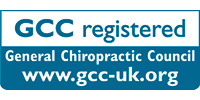Back Pain & Injuries

Types of back pain
Muscular pain is classically like a dull toothache. Often the patient is very stiff and uncomfortable in any static positions, such as sitting or standing, for too long. Muscular problems are often associated with marked morning stiffness. Patients usually get relief from keeping gently mobile unless they get muscle spasms, which can be very acute and severe and often confused with a trapped nerve.
Joint pain is usually sharper and often associated with "twinges" on movements such as twisting to get in and out of the car. Nerve pain from the lower back very rarely gives pain here. It will usually give pain into the leg with little or no back pain. The nerve can be trapped by a disc, a bone or even from some soft tissues.
A common myth is that acute low back pain is caused by a "slipped disc". Discs DON'T slip - they can bulge out like a car tyre (a herniation or a prolapse) and when they do, they usually cause leg pain or sciatica.
Causes of back injury
By far the majority of chronic back pain patients do not remember a specific incident to start the condition. Usually it just appears, and often steadily worsens. This is can be as a result of an overload of the structures of the lower back from problems such as poor posture, repetitive or awkward work positions, prolonged sitting or driving etc.
Occasionally patients may feel something "go" in their back with either an awkward twist or bend (or both) or a heavy lift. This may cause only a slight twinge initially, which gradually worsens hours later as inflammation and muscle spasm settles in.
Very often it can be the slightest little movement that can give acute pain. Patients often report having worked very hard in the garden for hours with no problems, and then "pulling" their back bending down to pick up a piece of paper. This may indicate a weakness in the deep muscles of the back which help control spinal movement.
Spondylosis or spondylitis is occasionally found on X-rays. This is often termed osteo-arthritis and is usually not as bad as it sounds. It is a degenerative process in the joints which cause them to wear, and occurs in most people as we get older. It is rarely the wear and tear that causes a sudden increase in pain; rather it is joint stiffness and muscle tightness and usually responds very well to chiropractic treatment.



